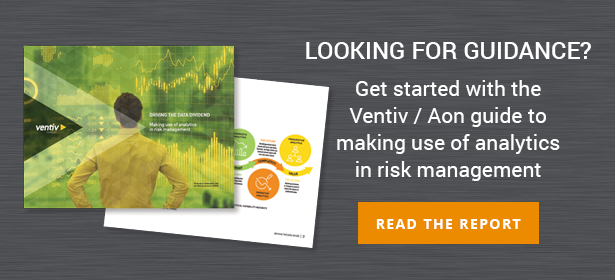Since its creation, the Internet has continued to bring new possibilities for our everyday lives—as well as for business.
One opportunity is the Internet of Things (IoT). However, along with opportunity also comes great risk. But what is IoT and how does it affect risk, insurance and claims management?
What is IoT?
The Internet of Things “is the concept of connecting any device (so long as it has an on/off switch) to the Internet and to other connected devices. The IoT is a giant network of connected things and people – all of which collect and share data about the way they are used and about the environment around them.”
IoT is firmly embedded into our everyday lives
IoT can be found all around us—from smart meters to smart watches. IoT also has great benefits in healthcare, such as for monitoring patients’ vital statistics, either for analysis of symptoms of a condition over a period of time or perhaps to trigger an alarm if a patient is in need.
In our homes we are increasingly embracing IoT. For example, you might have a smart home thermostat to control your heating. You can set your heating to come on at 6:00 a.m. However, your smart thermostat will be able to determine the temperature of your house and choose not to turn on your heating if it is already at a suitable temperature, thus saving costs and not wasting energy.
If you have a number of connected smart devices in your home that talk to each other, they can trigger reactions based on a set scenario. This could be triggering your smart coffee machine to heat up or turning your lights on when you enter the room between certain times of the day.
Challenges and opportunities for risk, insurance and claims management
IoT clearly presents a number of risks for organizations, most notably cyber attacks. Risk managers play a pivotal role in helping to balance the threat and opportunity for their business. This calls for a robust risk management framework, a holistic approach to security and ensuring that risk management is a standing agenda item at top level board meetings.
While there are challenges to safely harness the power of IoT, connected devices also present some opportunities for mitigating risks and improving safety.
For example, an Accenture report suggests that having connected operations can lead to a 10-20 percent decrease in health and safety costs.
It can also have an impact on insurance premiums. In an interview with Airmic, insurers XL Catlin talk about how IoT can drastically improve safety conditions across a range of insurable areas. For example, a "smart hard hat" for construction workers can monitor body and environmental conditions to alert if there is a risk of heatstroke.
Harnessing the potential of IoT
Connected devices can have a wide range of capabilities, which in reality present endless possibilities for businesses that we have not yet even considered.
For now, at Ventiv, we have harnessed the power of the Internet to improve processes, reduce errors and costs, and enable businesses to make use of data to provide key, game-changing insights.
Perhaps one of the easiest examples to explain is Robotic process automation (RPA), which enables manual, time-consuming tasks to be completed without the need for human intervention. For example, a bot can receive a claims email, find an open claim in the Ventiv Claims management system and populate it with additional information, ensuring no duplication or errors.
Whatever your risk appetite, the potential business advantages of IoT cannot be ignored. Incorporating a strategy for IoT into your risk management plan is an essential part of moving your business into the digital age.
David Thomas is the Sales Director at Ventiv Technology. If you would like any further information on this topic please contact him
at DAVID.THOMAS@VENTIVTECH.COM














